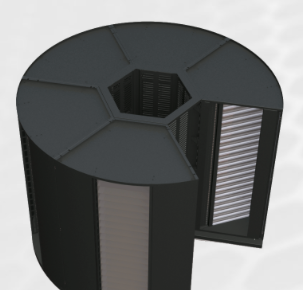Startup Vapor I/O Debuts Hyper-Converged Datacenter

Startup Vapor I/O emerged from stealth mode this week with its vision of a hyper-collapsed datacenter that seeks to add intelligence to the equation by including workloads "as a critical data point" for calculating efficiency in heretofore disconnected datacenters.
The goal is improved datacenter management in an era of agile hybrid clouds while delivering intelligence to the network edge, Cole Crawford, Vapor I/O founder and CEO, stressed in an interview. All will be needed as datacenters scale to handle an emerging data torrent via the Internet of Everything.
Vapor I/O is "soft launching" the new datacenter capability this week at the Open Compute Project summit by contributing a building block called the Open Data Center Runtime Environment. These "foundational elements" would allow users to create monitoring sensors that connect datacenter operations up to the operating system and workloads, the startup said.
Meanwhile, Vapor I/O said its Core Operating Runtime Environment would work across traditional IT equipment as well as Open Compute-compliant designs. The CORE platform also provides an open interface that applications and operating systems can query to make real-time decisions about scale, efficiency and power consumption.
An open API enables orchestration and automation in order to "right size" a datacenter, Crawford explained.
The other part of Vapor I/O's launch is the release of a hyper-collapsed datacenter design. Dubbed the "Vapor Chamber," it is described as a micro-module that replaces standard hot/cold aisle approach with 36 chambers each drawing 150 kW of power.
VaporI/O's design essentially compresses critical datacenter components in a "micro-module environment," explained Crawford, co-founder of OpenStack and former executive director of the Open Compute Project Foundation.
“The industry reality is that while PUE [Power Usage effectiveness] is a common standard for measuring datacenter efficiency, it doesn’t really tell us anything beyond the power delivery process," Crawford argued. "We are striving to move the industry in a direction that includes the workload as a critical data point for efficiency measurement."
At the same time, Vapor I/O also claims its hyper-collapsed approach can significantly improve datacenter energy efficiency. The industry average PUE for co-located facilities is rated at 1.9. "We're shooting for below 1.1" Crawford said.
Vapor I/O also is looking to leverage emerging "micro-servers," or servers on a chip, from ARM Ltd. and others with "lighter weight instruction sets." They would "sit alongside Intel and AMD, and these small core offerings in the context of a workload will be utilized" in new ways, he predicted.
A European "green computing" effort is moving along similar lines as it seeks another approach to datacenter scaling while reducing energy consumption. “The processor, the memory hierarchy, I/O, the system interconnects and the systems’ software all require fundamental changes to match the application’s performance in less space and with drastically lower energy costs,” leaders of the Euroserver project assert.
Besides ARM, the European micro-server project includes chip manufacturer STMicroelectronics and European research organizations.
These efforts are designed to head off a scenario in which "complexity at scale will kill the data center," according to Mesosphere executive Matt Trifiro. Mesosphere is listed as a VaporI/O technology partner along with manufacturing and system integration partners Jabil and Stack Velocity.
VaporI/O said it has so far secured contracts across "multiple industries." The first order goes to Union Station Technology Center, a datacenter co-location specialist. VaporI/O said its first deployed environment would be located at the center's headquarters in South Bend, Indiana.
The startup also will target the datacenter retrofit market, Crawford said.











